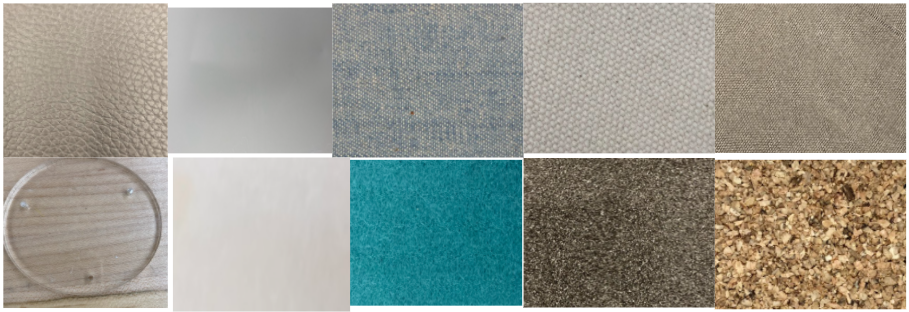Tactile Texture Classification
ProjectAbstract
This project introduces a novel sensor and corresponding method to classify tactile textural data, using an analog piezoelectric record cartridge. Two distinct manners of data preprocessing were developed and investigated, using principal component analysis (PCA) on frequency-spectrum data and manual feature selection using methods inspired from audio and music classification.

A record cartridge, similar to what was used for classification
Additionally, a textural dataset was developed, consisting of eleven classes of both similar and varying textures. Multiple classifiers were used to compare with the existing literature. The best performing were found using PCA, with 99.8% test accuracy for Support Vector Machines, and 99.7% for Extra Trees and Random Forest Classifiers. Additionally, an Extra Trees Classifier using manual feature selection achieves 76.6% accuracy on only 10 milliseconds of sampling time.

The textures in the dataset. See report for full list of materials
These results match and exceed the current state-of-art performances while using a third or less training data on a similar set of classes, while using an inexpensive COTS sensor with two channels, as opposed to similar works which almost universally use sensors that are either 1. Custom, without instructions, 2. Expensive, or 3. Have many more input channels.
More Information
Click here to watch the corresponding presentation for this project. For even more information, this report provides more detail on the implementation, novelty, and more.
Future Work
Future work for this project includes optimizing the detection speed of the sensor and expanding the potential dataset, using Active Learning methods to detect features faster or to learn unfamiliar textures. Additionally, we intend to experiment with different cartridge transducer types and tips to increase resolution and reduce wear on the material. This future work is with the intention of preparing the research for publication.